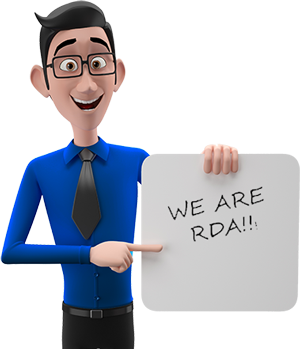A reserve study can be a valuable tool that keeps your organization from financial ruin. It is important to understand what a reserve study is and how it can help your community. In doing so, you can make smarter financial decisions for your association.
What Is a Reserve Study?
Before you can understand what a reserve study is, you must first understand how reserves work. Reserves are funds set aside by an association to pay for the major repairs and replacements of assets in the future. Many organizations maintain reserve funds, including homeowners associations, condo associations, country clubs, and even religious facilities.
Reserves come from the monthly fees that members pay. These fees are typically divided between the operating fund and the reserve fund. The operating fund covers the cost of day-to-day expenses, i.e. the expenses that the organization regularly pays for. In contrast, the reserve fund covers the cost of replacing or repairing components that the association is responsible for.
So, what is a reserve study?
A reserve study, also known as a reserve analysis, is a comprehensive report or guide that associations use to determine the right level of funding for their reserves and the correct dollar amount for contributions. It involves an inspection and inventory of the association’s assets as well as an estimation of each asset’s remaining useful life and cost of replacement/repairs.
The Importance of a Reserve Study
Reserve studies are integral to the successful operation of any organization. The primary objective of a reserve study is to provide a framework for associations that they can use to guide their reserve funding decisions. It is essentially a funding plan that ensures associations have a sufficient budget to cover the cost of repairs or replacements as they come up.
With a funding plan, members can make reserve contributions in small increments as opposed to the alternative, which is a large, one-time special assessment. Additionally, there would be no need for associations to take out a hefty loan.
While preserving the community’s assets is the main goal of a reserve study, there are other reasons why it is something every association needs.
Board members have a fiduciary obligation to maintain the common elements and areas in the community. They can’t feasibly fulfill this obligation without a reserve study in place. A reserve study lets board members know how much money must be available at any given time to cover the cost of repairs and replacements.
Delaying repairs or replacements may seem like a viable option. However, that would only have a negative impact on the association. The components will deteriorate, which will hinder functionality as well as appeal. Both of these factors can significantly affect property values.
Furthermore, many lending institutions require associations to produce a copy of their reserve study before qualifying for a loan. Homeowners may also need to present a copy of this study to mortgage lenders when taking out a first or second mortgage.
Types of Reserve Studies
Reserve study companies generally offer three types of reserve studies: a full reserve study, an update with a site inspection, and an update without a site inspection.
A full reserve study includes all the bells and whistles. It involves a physical walkthrough of the community to determine the condition of assets and take accurate measurements.
An update with a site inspection also involves a physical walkthrough of the community, but it does not include any measurements. Finally, an update without a site inspection doesn’t come with a walkthrough at all. Instead, the company will simply make adjustments based on an existing study and update it to account for economic changes.
There is a fourth type of reserve study, though not all companies offer it. It is a DIY reserve study wherein the association conducts the site inspection itself. The company will then make calculations based on the collected data.
More often than not, all types of reserve studies come with a funding plan, budgeting charts, and a comprehensive evaluation of the components. The only real difference is the site inspection. If your community recently underwent a full reserve study, then you can simply opt for an update.
Who Needs a Reserve Fund Study?
Ideally, all organizations and institutions that are responsible for maintaining common areas or elements should hire a professional to conduct a reserve study. These include homeowners associations, condo associations, timeshare communities, golf communities, country clubs, churches, schools, and the like.
A reserve study is not always required, though. There are two factors to consider when determining reserve study requirements. First, your association must look to state laws.
Some states clearly require associations to conduct a reserve study. For instance, California Civil Code Section 5550 requires reserve studies at least once every 3 years. Because reserve study requirements by state can vary, it is important to check your state laws for guidance.
The second factor is the governing documents. An association’s governing documents may require it to conduct a reserve study every so often. Again, governing documents can differ from one organization to another. Thus, you should review your bylaws and CC&Rs to know if such a requirement exists for your community.
How Much to Keep in Reserves
Some associations might want to skip the reserve study and simply keep their reserves funded according to a general rule. Unfortunately, there is no rule of thumb that applies to all associations in this aspect.
Every association is different. One association may need a smaller sum in its reserves due to the nature and number of common elements it maintains. Another may need a larger sum because it has more facilities and common areas.
The only reliable and accurate way to determine how much you need in your reserves is to conduct a reserve study. An analysis of your association’s assets, inventory, and current funding balance will help you better plan for your association’s future.
Get It Right, Hire a Pro
Clearly, a reserve study plays a key role in the success of any organization. Attempting to make the calculations yourself, though, is not recommended. For an accurate and comprehensive report, it is best to seek the help of a reserve study company.









